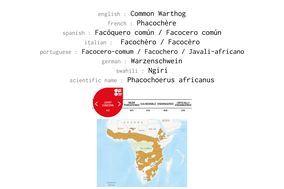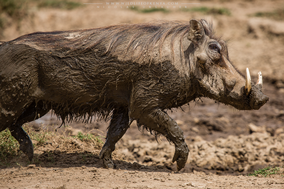- Homepage
- Bestiary
- Carnivores
- Pachydermata
- Birds of prey
- Bateleur
- Buzzard, Augur
- Buzzard, Common
- Eagle, African Crowned
- Eagle, African Fish
- Eagle, Black-chested Snake
- Eagle, Brown Snake
- Eagle, Long-crested
- Eagle, Martial
- Eagle, Steppe
- Eagle, Tawny
- Eagle, Wahlberg's
- Falcon, Amur
- Falcon, Lanner
- Falcon, Pygmy
- Goshawk, African
- Goshawk, Dark Chanting
- Goshawk, Eastern Chanting
- Goshawk, Gabar
- Harrier, African Marsh
- Harrier, Eurasian Marsh
- Harrier, Montagu's
- Harrier, Pallid
- Hawk, African Harrier
- Hobby, eurasian
- Kestrel, Common
- Kestrel, Grey
- Kestrel, Greater
- Kestrel, Lesser
- Kite, Yellow-billed
- Kite, Black-winged
- Eagle-owl, Verreaux's
- Owl, african scops
- Owl, Marsh
- Secretary Bird
- Sparrowhawk
- Vulture, Egyptian
- Vulture, Hooded
- Vulture, Lappet-faced
- Vulture, Palm-nut
- Vulture, Rüppell's
- Vulture, White-backed
- Vulture, White-headed
- Ongulates
- Antelope, sable
- Bongo
- Buffalo
- Bushbuck
- Bushpig
- Dik-dik, Kirk's
- Dik-dik, Günther's
- Duiker, common
- Duiker, Harvey's
- Eland
- Gazelle, Grant
- Gazelle, Thomson
- Gerenuk
- Giraffe, masai
- Giraffe, reticulated
- Giraffe, Rotschild's
- Hartebeest
- Hog, giant forest
- Impala
- Klipspringer
- Kudu, greater
- Kudu, lesser
- Oribi
- Oryx, east african
- Oryx, fringe-eared
- Reedbuck, Bohor
- Reedbuck, mountain
- Steenbok
- Suni
- Topi
- Warthog
- Waterbuck, common
- Waterbuck, defassa
- Wildebeest
- Zebra, Grevy
- Zebra, hybrid
- Zebra, plain
- Reptiles
- Waders and water birds
- Avocet pied
- Bittern, dwarf
- Coot
- Cormorant, long-tailed
- Cormorant, white-breasted
- Courser, Bronze-winged
- Courser, somali
- Courser, Temminck's
- Courser, three-banded
- Courser, Two Banded
- Crake black
- Crane, grey crowned
- Darter, african
- Duck, african black
- Duck, knob-billed
- Duck, white-backed
- Duck, white-faced whistling
- Duck, yellow-billed
- Egret, cattle
- Egret, great
- Egret, intermediate
- Egret, little
- Flamingo, greater
- Flamingo, lesser
- Goose, egyptian
- Goose, spur-winged
- Grebe, little
- Greenshank, common
- Gull, grey-headed
- Gull, sooty
- Hamerkop
- Heron, black
- Heron, black-headed
- Heron, goliath
- Heron, grey
- Heron, purple
- Heron, rufous-bellied
- Heron, squacco
- Heron, striated
- Night-heron, black-crowned
- Ibis, african sacred
- Ibis, glossy
- Ibis, hadada
- Jacana, African
- Lapwing, Senegal
- Moorhen, common
- Painted-snipe, greater
- Pelican, great white
- Pelican, pink-backed
- Plover, blacksmith
- Plover, black-winged
- Plover, caspian
- Plover, crowned
- Plover, kittlitz's
- Plover, long-toed
- Plover, ringed
- Plover, spur-winged
- Plover, three-banded
- Plover, wattled
- Pratincole, collared
- Ruff
- Sandpiper, common
- Sandpiper, green
- Sandpiper, marsh
- Sandpiper, wood
- Sandplover, greater
- Snipe, common
- Spoonbill
- Stilt
- Stint, little
- Stork, abdim's
- Stork, african openbill
- Stork, black
- Stork, marabou
- Stork, saddle-billed
- Stork, white
- Stork, woolly-necked
- Stork, yellow-billed
- Teal, common
- Teal, Hottentot
- Teal, red-billed
- Teal cape
- Tern, white-winged
- Tern, whiskered
- Thick-knee, spotted
- Thick-knee, water
- Terrestrial birds
- Bustard, black-bellied
- Bustard, buff-crested
- Bustard, Hartlaub's
- Bustard, kori
- Bustard, white-bellied
- Francoli, coqui
- Francolin, crested
- Francolin, Hildebrandt's
- Francolin, Jackson's
- Francolin, red-winged
- Francolin, Shelley's
- Guineafowl, helmeted
- Guineafow, vulturine
- Hornbill, southern ground
- Ostrich, masai
- Ostrich, somali
- Sandgrouse, black-faced
- Sandgrouse, chesnut-bellied
- Sandgrouse, yellow-throated
- Spurfowl, red-necked
- Spurfowl, yellow-necked
- Birds
- Apalis, yellow-breasted
- Babbler, arrow-marked
- Babbler, brown
- Babbler, northern pied
- Barbet, d'Arnaud's
- Barbet, red-and-yellow
- Barbet, red-fronted
- Batis chin-spot
- Bee-eater, blue-cheeked
- Bee-eater, little
- Bee-eater, cinnamon-chested
- Bee-eater, eurasian
- Bee-eater, olive
- Bee-eater, somali
- Bee-eater, white-throated
- Bee-eater, white-fronted
- Bishop, yellow
- Bishop, Zanzibar red
- Bishop, yellow-crowned
- Boubou, tropical
- Boubou, slate-coloured
- Bulbul
- Bush-shrike, sulphur-breasted
- Bunting, cinnamon-breasted rock
- Bush-shrike, rosy-patched
- Camaroptera, grey-backed
- Canary, brimstone
- Canary, yellow-crowned
- Chat, alpine
- Chat, anteater
- Chat, cliff
- Chat, sooty
- Chatterer
- Cisticola, Aberdare
- Cisticola, desert
- Cisticola, Hunter's
- Cisticola Lyne's
- Cisticola, rattling
- Cisticola, stout
- Cisticola, winding
- Citril, african
- Cordon-bleu
- Coucal, white-browed
- Coucal, black
- Crow, house
- Crow, pied
- Cuckoo, african
- Cuckoo, african emerald
- Cuckoo, common
- Cuckoo, Diederik
- Cuckoo, great spotted
- Cuckoo, red-chested
- Dove, african mourning
- Dove, dusky turtle
- Dove, emerald-spotted wood
- Dove, namaqua
- Dove, laughing
- Dove, red-eyed
- Dove, ring-necked
- Drongo, fork-tailed
- Firefinch
- Fiscal, northern
- Fiscal, grey-backed
- Fiscal, long-tailed
- Fiscal, Taita
- Flycatcher, african dusky
- Flycatcher, african grey
- Flycatcher, african paradise
- Flycatcher, spotted
- Flycatcher, southern black
- Flycatcher, white-eyed slaty
- Go-away-bird
- Grenadier, purple
- Hoopoe
- Hoopoe, green wood
- Hornbill, african grey
- Hornbill, Jackson's
- Hornbill, Von Der Decken's
- Hornbill, red-billed
- Hornbill, eastern yellow-billed
- Hornbill, sylvery-cheeked
- Hornbill, crowned
- Indigobird, village
- Kingfisher, grey-headed
- Kingfisher, giant
- Kingfisher, malachite
- Kingfisher, pied
- Kingfisher, striped
- Kingfisher, woodland
- Lark, pink-breasted
- Lark, red-capped
- Lark, rufous-naped
- Longclaw, pangani
- Longclaw, rosy-breasted
- Longclaw, yellow-throated
- Lovebird
- Mannikin, bronze
- Mannikin, rufous-backed
- Mousebird, blue-naped
- Mousebird, speckled
- Mousebird, white-headed
- Oriole, black-headed
- Oriole, african golden
- Oxpecker, yellow-billed
- Oxpecker, red-billed
- Parrot, brown
- Parrot, red-bellied
- Pigeon, african green
- Pigeon, speckled
- Pipit, grassland
- Pipit, plain-backed
- Pipit, golden
- Quail-finch
- Quelea red-billed
- Raven, white-necked
- Raven, fan-tailed
- Robin-chat, Cape
- Robin-chat, white-browed
- Roller, eurasian
- Roller, lilac-breasted
- Roller, purple
- Rook, Cape
- Scimitarbill
- Scimitarbill, Abyssinian
- Scrub Robin, white-browed
- Seedeater, streaky
- Seedeater, yellow-rumped
- Shrike, lesser grey
- Shrike, red-backed
- Shrike, northern white-crowned
- Shrike, Isabelline
- Silverbird
- Sparrow, chesnut
- Sparrow, grey-headed
- Sparrow, rufous
- Sparrow, yellow-spotted bush
- Sparrow-Lark Fischer's
- Sparrow-weaver, Donaldson-Smith's
- Sparrow weaver, white-browded
- Starling, black-bellied
- Starling, bristle-crowned
- Starling, Fischer's
- Starling, Golden-breasted
- Starling, greater blue-eared
- Starling Hildebrandt's
- Starling, red-winged
- Starling, Rüppell's
- Starling, slender-billed
- Starling, superb
- Starling, violet-backed
- Starling, wattled
- Sunbird, amethyst
- Sunbird, beautiful
- Sunbird, bronze
- Sunbird, eastern double-collared
- Sunbird, golden-winged
- Sunbird, Hunter's
- Sunbird, malachite
- Sunbird, mariqua
- Sunbird, eastern violet-backed
- Sunbird, purple-banded
- Sunbird, scarlet-chested
- Sunbird, scarlet-tufted malachite
- Sunbird, tacazze
- Sunbird, variable
- Swallow, barn
- Swallow, red-rumped
- Swallow, lesser striped
- Swallow, wire-tailed
- Tchagra, black-crowned
- Tchagra, brown-crowned
- Thrush, abyssinian
- Thrush, common rock
- Thrush, spotted morning
- Tit, red-throated
- Tit, white-bellied
- Wagtail, african pied
- Wagtail, western yellow
- Warbler, grey-capped
- Warbler, moustached grass
- Warbler, willow
- Waxbill, common
- Weaver, african golden
- Weaver, Baglafecht
- Weaver, black-capped social
- Weaver, chesnut
- Weaver, grey-capped social
- Weaver, grosbeak
- Weaver, Holub's golden
- Weaver, northern masked
- Weaver, parasitic
- Weaver, red-billed
- Weaver, red-headed
- Weaver, spectacled
- Weaver, speckle-fronted
- Weaver, Speke's
- Weaver, Taveta golden
- Weaver, village
- Weaver, vitelline masked
- Weaver, white-headed buffalo
- Wheatear, abyssinian black
- Wheatear, capped
- Wheatear, isabelline
- Wheatear, northern
- Whinchat
- Whydah, paradise
- Whydah, pin-tailed
- Widowbird, Jackson's
- Widowbird, red-cowled
- Widowbird, white-winged
- Widowbird, yellow-mantled
- Woodpecker, grey
- Wodpecker, nubian
- Wren-Warbler , Grey
- Primates, Rodents and Others
- Baboon, olive
- Baboon, yellow
- Colobus, angolan
- Colobus, guereza
- Galago, greater
- Hare
- Hyrax, rock
- Hyrax, bush
- Mongoose, banded
- Mongoose, dwarf
- Mongoose, slender
- Mongoose, white-tailed
- Mole rat, naked
- Monkey, blue
- Monkey, patas
- Monkey, vervet
- Porcupine
- Rat, afroalpine vlei
- Squirrel, unstripped ground
- Squirrel, ochre bush
- Squirrel, red bush
- Chiromantis petersii
- B&W Gallery
- Buy prints
- Contact
Carnivores Pachydermata Ongulates Reptiles Primates, rodents and others Birds Birds of prey Terrestrial birds Waders and water birds
Warthog
The name ‘warthog’ comes from their large wart-like protuberances found on its face. Technically they are not warts, but rather they are made of bone and cartilage. The male (boar) has two pairs of these ‘warts’ and the female (sow) one pair.
Warthogs like to live in abandoned burrows that were dug out by other animals, such as aardvarks or porcupines. These burrows are used for a number of reasons, such as for sleeping, where they raise their young, and a safe place to escape from predators. In order to ensure their safety, and when protecting themselves from pursuing predators, they will slide into a burrow backwards, tail first, so that they can use their tusks to defend themselves against unwanted guests. When startled or threatened, warthogs can be surprisingly fast, running at speeds of up to 50 km per hour!
Warthogs have specially-adapted protective pads on their wrists that allow them to ‘kneel’ down to feed. Thanks to their short necks and relativity long legs it is far easier for them to kneel while grazing than it would be for other grazers.Warthogs mainly eat grass or will dig for roots and bulbs when it’s dry. If they have the opportunity, they will scavenge on meat as they are omnivorous.
Warthogs have litters of two to four piglets however, their mortality rate is quite high due to predators.






















